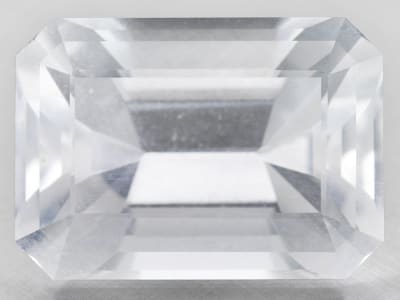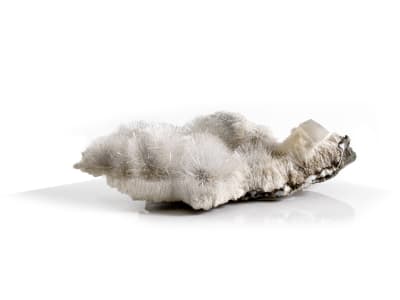Natrolite is a zeolite mineral named for the Greek word natron, meaning "soda," due to the presence of sodium in the stone. Its range of colors include yellow, gray, and brown, to colorless. Occasionally, it is found in pale yellow to red hues. Crystals often grow in long, needle-like formations, and are especially prized by specimen collectors.
General Information
Common Name
Natrolite
Species
Natrolite
Transparency
Transparent - Opaque
Dispersion
Strength: Weak Fire Value: 0.005
Refractive Index
1.480-1.493
Birefringence
0.012-0.013
Optic Character
Biaxial
Optic Sign
Positive
Polariscope Reaction
Aggregate (AGG), Doubly Refractive (DR)
Fluorescence
SWUV: Inert to strong green
LWUV: Inert to weak greenish white
LWUV: Inert to weak greenish white
Pleochroism
Unobservable
Hardness
5-5.5
Streak
White
Specific Gravity
2.200-2.260
Toughness
Poor
Inclusions
Natrolite is usually found as a fibrous aggregate. Stones might have yellowish brown acmite inclusions that appear rod-like.
Luster
Vitreous, Silky
Fracture
Uneven
Cleavage
Perfect, in one direction
Chemical Name
hydrated sodium aluminum silicate
Chemical Formula
Na2[Al2Si3O10].2H2O
Crystal System
Orthorhombic
Chemistry Classification
Silicate
Natrolite Colors
-
 Blue
Blue -
 Brown
Brown -
 Colorless
Colorless -
 Gray
Gray -
 Pink
Pink -
 White
White -
 Yellow
Yellow
Countries of Origin
Russian Federation; Unknown; United States of America
Care
Natrolite is brittle so take extra care when handling.

